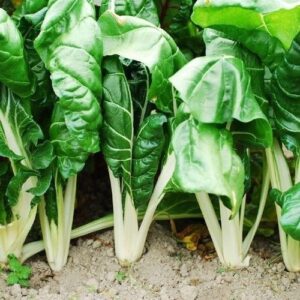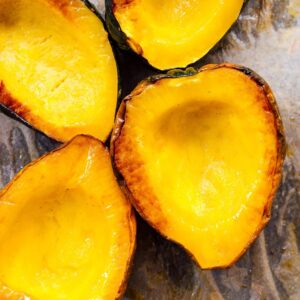Diva variety of cucumber
Description of Diva variety of cucumber
The Diva cucumber variety is known for its exceptional taste, texture, and versatility. It produces slender, smooth-skinned fruits that are typically about 6 to 8 inches long. One of its distinguishing features is its thin, tender skin, which eliminates the need for peeling, making it ideal for fresh eating. The flesh is crisp, juicy, and seedless, with a refreshing, mildly sweet flavor. Diva cucumbers are often described as “burpless,” meaning they are less likely to cause digestive discomfort compared to other cucumber varieties. Additionally, they have good disease resistance and can be grown in various climates, making them a favorite among home gardeners and market growers alike.
Planting instructions for Diva variety of cucumber.
To plant Diva cucumbers, here are the planting instructions:
- Select a Sunny Location: Choose a spot in your garden that receives full sunlight for at least 6-8 hours a day. Cucumbers thrive in warm, sunny conditions.
- Prepare the Soil: Ensure the soil is well-drained, loose, and rich in organic matter. Work the soil to a depth of at least 6 inches and incorporate compost or aged manure to improve fertility and soil structure.
- Sow Seeds or Transplant Seedlings: Diva cucumbers can be grown from seeds or transplants. If planting seeds directly in the garden, sow them about 1 inch deep and 12-18 inches apart in rows that are 3-5 feet apart. If using transplants, plant them at the same depth as they were in their containers and space them according to the recommended spacing on the transplant label.
- Watering: Keep the soil consistently moist but not waterlogged. Cucumbers need regular watering, especially during hot and dry periods. Water deeply at least once a week, and more often during periods of extreme heat.
- Provide Support: Consider providing support for the cucumber vines to climb. Diva cucumbers are vining plants and can benefit from trellises, cages, or stakes. This not only saves space but also keeps the fruit off the ground, reducing the risk of rot and pests.
- Fertilization: Apply a balanced fertilizer or compost when planting, and again when the plants start to flower. Follow the fertilizer package instructions for application rates.
- Pest and Disease Management: Monitor your plants regularly for signs of pests and diseases, such as aphids, cucumber beetles, and powdery mildew. Use organic or chemical controls as needed to manage these issues.
- Harvesting: Harvest Diva cucumbers when they reach the desired size, typically about 6-8 inches long. Regular harvesting encourages the plant to produce more fruit. Use a sharp knife or scissors to cut the cucumbers from the vine, taking care not to damage the plants.
Description of Diva variety of cucumber
The Diva cucumber variety is known for its exceptional taste, texture, and versatility. It produces slender, smooth-skinned fruits that are typically about 6 to 8 inches long. One of its distinguishing features is its thin, tender skin, which eliminates the need for peeling, making it ideal for fresh eating. The flesh is crisp, juicy, and seedless, with a refreshing, mildly sweet flavor. Diva cucumbers are often described as “burpless,” meaning they are less likely to cause digestive discomfort compared to other cucumber varieties. Additionally, they have good disease resistance and can be grown in various climates, making them a favorite among home gardeners and market growers alike.
Planting instructions for Diva variety of cucumber.
To plant Diva cucumbers, here are the planting instructions:
- Select a Sunny Location: Choose a spot in your garden that receives full sunlight for at least 6-8 hours a day. Cucumbers thrive in warm, sunny conditions.
- Prepare the Soil: Ensure the soil is well-drained, loose, and rich in organic matter. Work the soil to a depth of at least 6 inches and incorporate compost or aged manure to improve fertility and soil structure.
- Sow Seeds or Transplant Seedlings: Diva cucumbers can be grown from seeds or transplants. If planting seeds directly in the garden, sow them about 1 inch deep and 12-18 inches apart in rows that are 3-5 feet apart. If using transplants, plant them at the same depth as they were in their containers and space them according to the recommended spacing on the transplant label.
- Watering: Keep the soil consistently moist but not waterlogged. Cucumbers need regular watering, especially during hot and dry periods. Water deeply at least once a week, and more often during periods of extreme heat.
- Provide Support: Consider providing support for the cucumber vines to climb. Diva cucumbers are vining plants and can benefit from trellises, cages, or stakes. This not only saves space but also keeps the fruit off the ground, reducing the risk of rot and pests.
- Fertilization: Apply a balanced fertilizer or compost when planting, and again when the plants start to flower. Follow the fertilizer package instructions for application rates.
- Pest and Disease Management: Monitor your plants regularly for signs of pests and diseases, such as aphids, cucumber beetles, and powdery mildew. Use organic or chemical controls as needed to manage these issues.
- Harvesting: Harvest Diva cucumbers when they reach the desired size, typically about 6-8 inches long. Regular harvesting encourages the plant to produce more fruit. Use a sharp knife or scissors to cut the cucumbers from the vine, taking care not to damage the plants.





